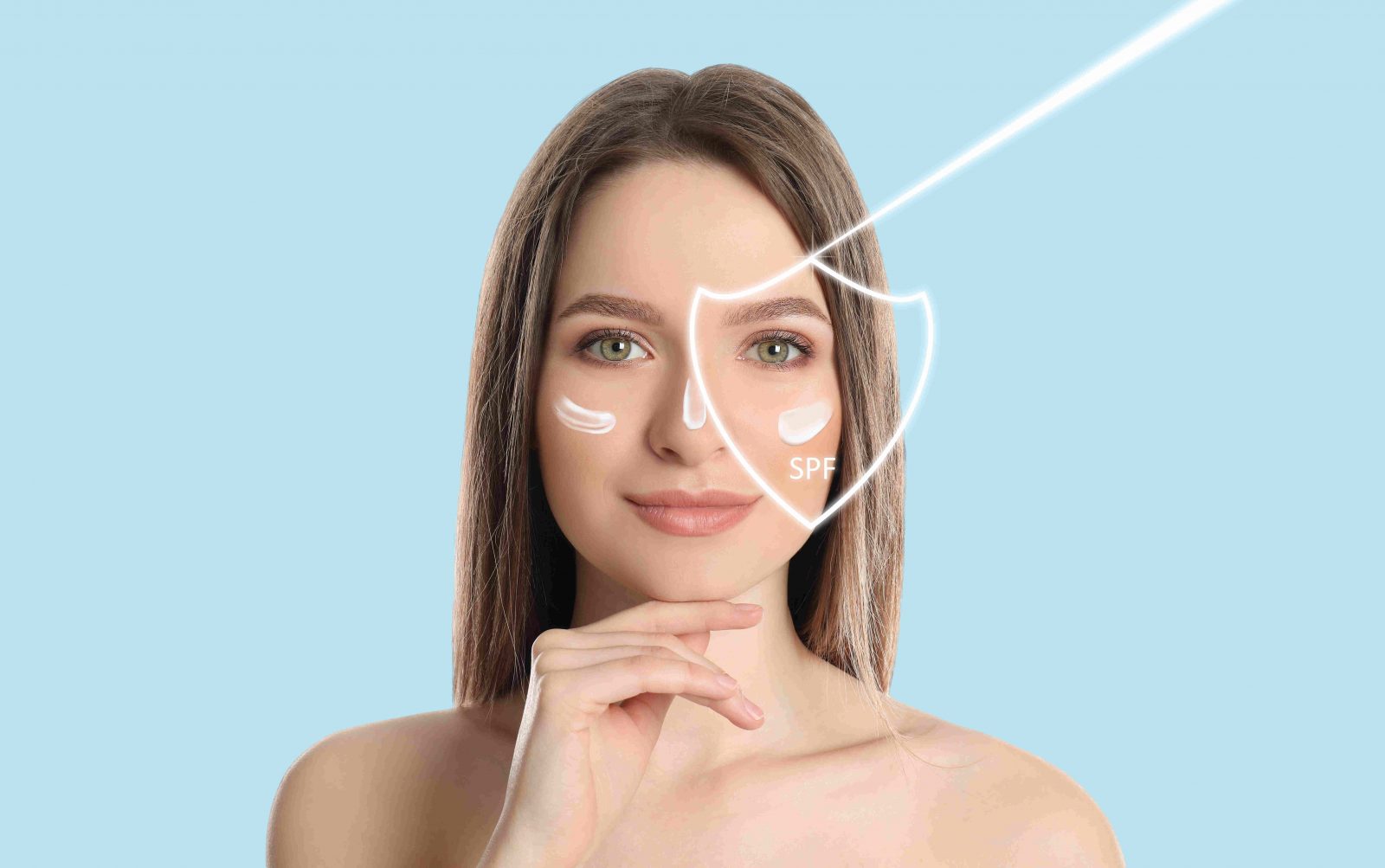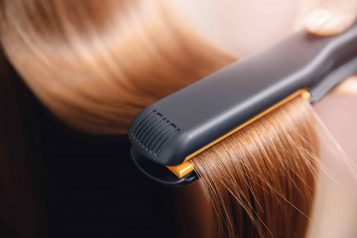 Photo Credit: Shutterstock
Photo Credit: Shutterstock
It’s time for your laser treatment, body contouring procedure, or the facelift you’ve always desired. Before procedure day, you go in for a consultation and your surgeon lays down all the ground rules to prepare. The handbook filled with guidelines lists that you must stay out of the sun. Knowing that this request is important, you inquire about the specifics because the reality is that the sun’s ultraviolet rays are always shining down on us.
Whether you are driving a car or walking into your consultation appointment, you are susceptible to the strength of the sun and its possible effects on your skin. Keeping this in mind, Haute Beauty decided to have your backs and ask our Haute Beauty experts about the facts. What procedure requires you to stay out of the sun before and after the surgery? What are the reasons? And is it to avoid scarring or swelling? Here’s what our experts had to say:
Reana Myers, Careaga Plastic Surgery | Body | Miami/Fort Lauderdale
One of the most common questions that I get from patients is whether they can get sun exposure after their non-surgical procedures. When it comes to injectables, sun exposure is not contraindicated unless you have significant bruising and so patients are always recommended to wear sunscreen. However, when it comes to any procedure that involves skin resurfacing or retexturing, it is important to note that though these are considered non-surgical procedures, they require the patient to avoid the sun before and after treatment. Some examples of these treatments are all lasers such as IPL, fractional and CO2, micro-needling, and PRP treatments.
For more information, visit Careaga Plastic Surgery’s website, Instagram, or Facebook!
Dr. Robert Vitolo | Breast | New York
It’s not really about staying out of the sun. It’s about getting a sunburn. Staying out of the sun is not necessary for anyone. And the reason we say stay out of the sun is that most people do not know how to use sunblock properly. The only procedure that requires sun blockage is a laser ablation, where we resurface the skin using a laser that removes the top layer of your skin and creates a scab. After a week, the scab comes off and under the scab is a new skin. You do not want to expose the new pink skin to the sun until your skin color returns to normal. The new skin is pink because all the dead skin was removed and now it’s the equivalent of brand-new baby skin, but it’s pink.
The skin contains melanocyte cells that contain the pigment melanin. When the pigment cells are exposed to the sun it stimulates melanocytes, which then causes the skin to develop excess color thus turning the skin tan to brown. To prevent this from occurring, patients need a sunblock with an SPF of 50 or higher, It is also recommended to wear a large brim hat, sunglasses, and sunscreen (even when you are home) after a facial laserbrasion.
For more information, visit Dr. Vitolo’s website, Instagram or Facebook!
Dr. Brian K. Machida | Face | Los Angeles
It’s important to stay out of the sun before and after fractional CO2 laser resurfacing due to the risk of pigment change after surgery. Plus we usually prescribe a bleaching cream prior to surgery so sun exposure should be avoided while getting this pre-op treatment.
For more information, visit Dr. Machida’s website, Instagram, or Facebook!
Dr. Kiran Gill | Body | Naples
I tell my patients to avoid the sun after any facial surgery I perform that involves exposed skin, including the face, eyes, and neck areas, because sun/UV exposure can affect healing, recovery, and results. It’s also a good rule of thumb to avoid exposure before surgery to maintain skin integrity, which is needed to support the healing process. Part of the recovery conversation I have with patients is that some inflammation is normal after surgery, but sun exposure can make it more pronounced, resulting in excess swelling, bruising, and a longer healing time. Sun exposure can also increase melanin production in the incision lines, making scars more visible.
For more information, visit Dr. Gill’s website, Instagram, or Facebook!
Dr. Oliver Chang | Brazilian Butt Lift | Miami/Fort Lauderdale
For the most part, I would have to say for most surgeons, staying out of the sun before and after surgery is a standard. This, of course, varies from surgeon preference, procedure type, body location, and whatever else the sun can potentially do to hinder the overall procedure. For my patients, pre-operative sun exposure usually is limited weeks prior to prevent any sunburn to the area of surgery as well as maintain well-hydrated skin for better postoperative healing as well as overall hydration status, especially for body contouring procedures.
Postoperatively, sun exposure should be very limited due to swelling, bruising and tanning of any area of these areas from surgery could potentially lead to darkening of those areas permanently. I advise my patients to avoid direct sun exposure to any scar, and incisions for up to a year postoperatively to achieve the maximum scar quality, which almost everyone, wants the scar to be as light and faint as possible. Always wear sunscreen/sunblock throughout the body, stay well hydrated and properly cover any surgical sites postoperatively to stay safe and achieve the best results!
For more information, visit Dr. Chang’s website, Instagram, or Facebook!
Dr. Jeffrey Lee | Breast Augmentation | Boston
Laser resurfacing is the one procedure that I require patients to be out of the sun before and after. Sun exposure can cause your skin to increase its pigment production which can lead to postinflammatory hyperpigmentation in treated areas. While scars can be 100% protected from UV rays, larger treated areas like the whole face and neck cannot.
Sunscreen is good but not good enough, so I generally recommend being out of the sun completely for 2 weeks prior to and four weeks after an aggressive laser resurfacing procedure. Surgical scars are equally important to keep out of the sun and my recommendation is to always double cover. This means, underwear and shirt/pants, or bathing suit and bandaids/tape. This ensures that 100% of the UV rays are blocked and that the scar will not darken.
For more information, visit Dr. Lee’s website, Instagram, or Facebook
Dr. Daisy Ayim | Body | Houston
Summer is fast approaching and clients want to enjoy the beautiful weather. However, we advise anyone that chooses to have a chemical peel or morpheus8 radiofrequency microneedling in our practice to stay away from the sun. This is so important to avoid skin damage since both procedures alter the skin layer to improve appearance, texture and color. Furthermore, this makes the skin vulnerable to sun rays even with sunscreen usage which may lead to complications from sun exposure such as skin burn, scarring and photoaging.
For more information, visit Dr. Ayim’s website, Instagram, or Facebook!
Natalie Hassell, Dr. Samuel Lin | Nose | Boston
In general, it is important to limit sun exposure to prevent sun damage, skin cancer, and photo-aging. Before a procedure or surgery, it is especially important to limit sun exposure and use sun protection to avoid burning, irritating, or inflaming the skin. The length and importance of sun avoidance after a procedure vary. For some in-office procedures, such as chemical peels or laser hair removal, sun avoidance is recommended for the first days/weeks after treatment when your skin may be extra sensitive. It is also best to avoid sun exposure before laser hair removal, as it is most effective on untanned skin. Depending on the specific treatment or peel, the recommended time may differ so be sure to consult your provider for individualized advice. Injectables like Botox or fillers, sun avoidance is generally not required but may be advised to help limit any swelling. Any surgery that results in scars that may be exposed to sunlight, staying out of the sun is important for optimal healing.
After surgery, it is important to avoid sun exposure for at least the first several weeks. Especially in this early phase of healing, sun exposure can lead to swelling and increased scarring. The heat from the sun, or any heat source, can increase swelling. Increased swelling can lead to discomfort and prolong the healing process. Additionally, sun exposure causes skin pigment changes. Classically, this results in a suntan or a sunburn. Fresh scars are extra susceptible to pigment changes, which can lead to darkened, reddened, or more pronounced scars, even after the scars have finished healing. Even after complete recovery, it is important to limit sun exposure, wear at least SPF 50 and protective clothing, and seek shade in order to minimize sun damage and increase the longevity of your surgical results.
For more information, visit Dr. Lin’s website, Instagram, or Facebook!
Dr. Sachin Shridharani | Face & Body | New York
Procedures that require patients to stay out of the sun can range anywhere from facials to invasive surgeries. Generally, anything that creates vulnerability in a temporary capacity to the skin requires individuals to avoid sunlight. The non-invasive procedures include but are not limited to lasers treatments, chemical peels, and aggressive micro-needling and energy-based treatments. For almost any surgery, it is important to avoid sunlight to the affected area post-surgery. Scar tissue is fragile, and its healing process and the remodeling phase of wound healing can take up to one year. Disruption due to sunburn or overexposed sunlight leads to hyperpigmentation and can impair the wound healing process.
In aesthetic plastic surgery, we see a seasonality with several different procedures. We joke that summer bodies are made in the winter…AT LUXURGERY! For instance, a patient should wait several months after a tummy tuck before exposing their belly button scar directly to the sun. This will give the patient the best chance of a flat and native skin color scar as opposed to the risk of hyperpigmentation or a poor-healing scar. For my patients receiving facelifts or blepharoplasty (eyelid surgery), it is paramount to use aggressive amounts of sunblock if they intend on being exposed to the sun even two to three months after surgery in order to avoid the scar becoming reddened or more visible. Like everything in life…moderation is key even when soaking up Vitamin D.
For more information, visit Dr. Shridharani’s website, Instagram, or Facebook!
Dr. Ralph Garramone | Body | Fort Myers
The facelift, necklift, and CO2 laser are procedures that I ask patients to stay out of the sun both before and after surgery. When I do neck-up facial restoration for my patients, this helps smooths the skin around the mid to lower face and neck and dramatically helps with skin laxity and wrinkles all while enhancing the facial contours.
The effects of any facial surgery are considered permanent, but that doesn’t mean that new skin damage cannot occur, as we age we are constantly dealing with collagen loss. It is important that patients care for their facial skin following the facelift and necklift surgery to preserve the results of their procedure.
One way that patients can protect facial skin is by avoiding sun exposure, it is important to keep the skin protected from sun damage. The sun emits harmful UV rays that are known to cause sunburn and long-term damage. Sun exposure is the enemy of anti-aging.
Years of sun exposure will result in increased lines, wrinkles, age spots, and discoloration. However, what many people do not know is that sun exposure can also interfere with healing and increase the risk of complications after a surgical procedure, such as a facelift and necklift.
Patients should also avoid sun exposure after a facelift to minimize the risk of potential complications. If the facial skin is exposed to the sun while it is still healing from facelift surgery, patients are at an increased risk of:
- Increased inflammation and skin irritation
- Scars can appear more visible
- Skin discoloration around incision sites
- Signs of new sun damage, including new creases and wrinkles
I do recommend staying out of the sun completely during the first week of a facelift and necklift recovery. Most patients find it easy to follow this recommendation since they are in recovery mode. However, even after the first week of recovery, patients are asked to avoid sun exposure as much as possible. It is especially important to protect the skin around incision sites. Areas, where surgical incisions have been made, should be kept out of the sun for the first year following facelift surgery.
Protecting the Skin Long-Term
Most people are in the sun on a daily basis. Just getting to and from your car or walking the dog can expose the skin to harsh UV rays, so it may seem difficult to protect facial skin from sun exposure after facelift surgery. However, by following a few simple tips, patients will be able to minimize the risk of sun damage so that the results of facelift surgery are long-lasting.
- Wear sunscreen on a daily basis: Many facial lotions and makeup contain some degree of UV protection, which makes it easy to make sunscreen a daily habit.
- Try and use chemical-free sunscreens that won’t irritate the skin
- Cover the face: Sunscreen helps, but the facial skin should be protected as much as possible. Wide-brimmed hats make it easier to cover the facial skin and block out harmful UV rays. Take advantage of wearing a mask on your daily commute and walks.
- Find the shade: If a person will be outdoors for a prolonged amount of time, it is important to avoid direct sunlight. Shady areas offer some degree of sun protection.
For more information, visit Dr. Garramone’s website, Instagram, or Facebook!
For more information, visit Dr. Brian A. Levine's social media:

























